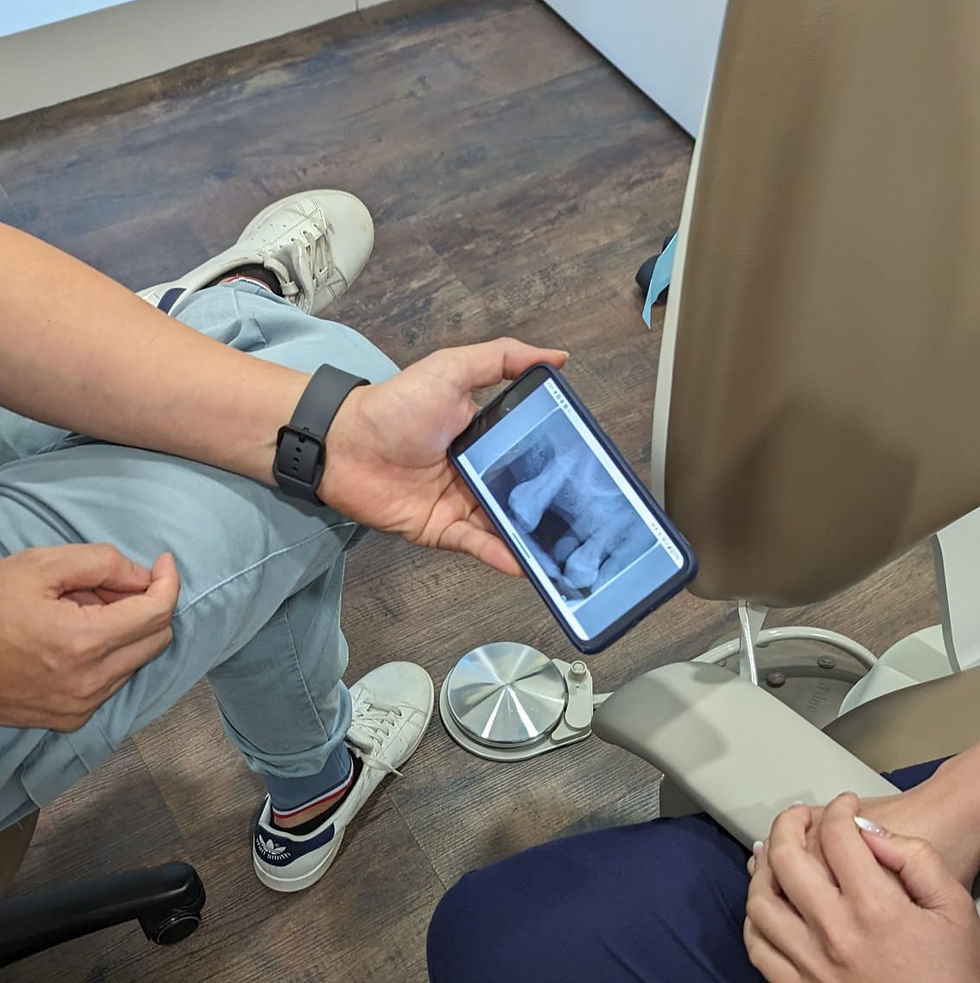When you visit your dentist, you might wonder why they recommend dental X-rays. Are they really necessary? In this article, we'll explore the importance of dental X-rays, why they're essential for diagnosing dental issues, how often they're recommended, and why they're safer than you might think.

Why Dental X-Rays are Important: Dental X-rays are a valuable tool in the world of dentistry, serving as a crucial diagnostic aid. They allow dentists to see beyond the surface, identifying issues that may not be visible during a regular dental exam. These images help in the early detection of dental problems, including cavities, gum disease, impacted teeth, and even oral cancer. By catching these issues early, dental X-rays play a vital role in preventing more extensive and costly treatments down the line.
Types of Dental X-Rays:
In the dental setting, several types of X-rays are commonly taken, including:

1. Bitewing X-rays: These capture images of the upper and lower teeth in one area of the mouth and are often used to detect cavities and check for proper alignment.
2. Panoramic X-rays: These provide a broader view of the entire mouth and are helpful for assessing impacted teeth, fractures, and tumors.
3. Periapical X-rays: These focus on individual teeth and are used to diagnose issues like infections or root problems.
Frequency of Dental X-Rays:

You may wonder how often you should have dental X-rays. The frequency of X-rays depends on your individual dental health and risk factors. For most patients, dental professionals recommend X-rays every 12 to 24 months. However, those with specific oral health concerns or a history of cavities may benefit from more frequent X-rays, typically every 6 to 12 months. Your dentist will assess your needs and recommend X-rays accordingly. It's essential to follow your dentist's guidance to ensure your oral health is effectively monitored and any issues are promptly addressed. Safety Measures in Dental Clinics: One common concern about dental X-rays is radiation exposure. Rest assured that dental clinics take extensive precautions to minimize this risk. They use state-of-the-art digital X-ray technology that emits significantly less radiation than traditional film-based X-rays. Additionally, lead aprons and thyroid collars are typically used to shield other parts of the body from radiation exposure. Radiation Exposure Compared to Daily Activities: It's important to put dental X-ray radiation into perspective. The amount of radiation used in dental X-rays is extremely low. To provide a comparison, a full set of dental X-rays typically exposes a patient to less radiation than they would receive from a day of natural background radiation, a short airplane flight, or enjoying a few hours in the sun. The benefits of early diagnosis and treatment far outweigh this minimal risk. Penn Pacific Dental Center: Your Partner in Oral Health: At Penn Pacific Dental Center, we prioritize your oral health and well-being. Our commitment to using the latest in dental technology, including low-dose digital X-rays, ensures your safety during diagnostic procedures. By choosing us as your dental care provider, you're making a proactive investment in your oral health. In conclusion, dental X-rays are a valuable tool that helps dentists provide you with the best possible care. Their safety measures and minimal radiation exposure make them an essential part of maintaining your oral health. Don't hesitate to discuss any concerns you may have with your dentist during your next visit. Your smile deserves the best care, and dental X-rays play a pivotal role in achieving that goal.


Comments